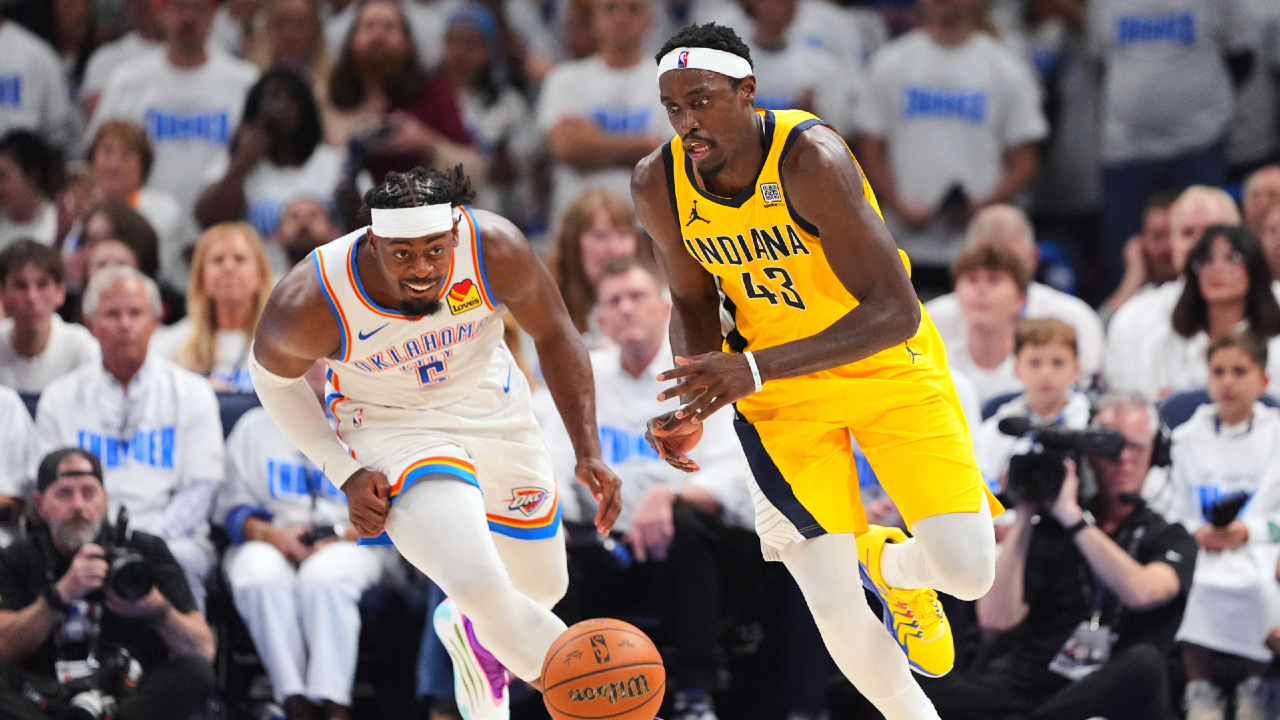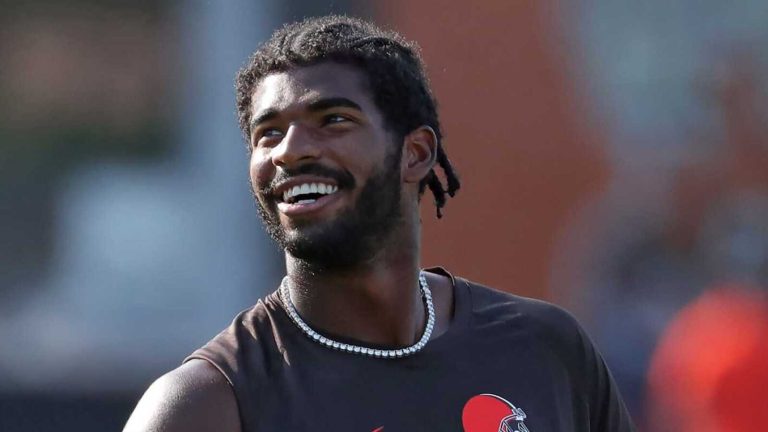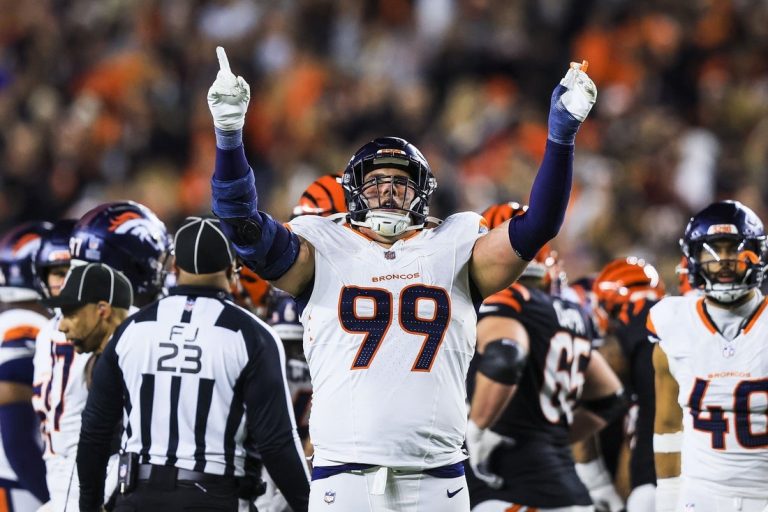Pascal Siakam is suddenly a veteran, a sage with hard-earned playoff wisdom to pass along to his younger teammates. His word and deeds carry that much more weight not only because of his nine years of NBA service time, but because of his role as a key starter on a championship team with the Toronto Raptors.
His teammates with the Indiana Pacers — all but one of whom are experiencing the Finals for the first time — shout him out for his leadership.
“He’s been a constant presence in our locker room, a constant leader in our locker room,” said Pacers wing Aaron Nesmith, 25. “He’s done a good job of just keeping us all level-headed and our eyes on the prize.”
He has even been a resource and inspiration for fellow Pacers veteran Myles Turner, who shouted out Siakam as a former G-League Finals MVP with Raptors 905 when Siakam earned the Larry Bird Award as Eastern Conference Finals MVP after the Pacers disposed of the New York Knicks in six games.
It’s the little things — “Pascal is someone who actually has been there before … knows how NBA Finals Media Day works. Which I didn’t,” Turner said.
And also the bigger things, like averaging 24.8 points with an eFG of 57.1 in the Eastern Conference Finals or scrapping away for 19 points on 15 shots — including a crucial offensive rebound and putback in the final seconds of Game 1 against the Thunder that helped set the stage for Pacers guard Tyrese Haliburton’s buzzer-beating game winner.

-
Watch the NBA Finals on Sportsnet
The Oklahoma City Thunder and Indiana Pacers face off in the NBA Finals with the series tied 1-1. Who will take the lead in Game 3? Watch live Wednesday at 8:30 p.m. ET / 5:30 p.m. PT on Sportsnet and Sportsnet+.
For Siakam, the journey remains — upon reflection — somewhat bewildering. Half his lifetime ago, he was a tall, skinny soccer player travelling from Cameroon to attend a Basketball Without Borders Camp in South Africa, mainly as a reason to visit his sister.
“Obviously, I’m super grateful,” he told reporters the other day when asked about his unlikely journey to the cusp of his second NBA championship. “That little kid that was in Basketball Without Borders, I had dreams, but nothing near what’s happening to me in my life and what I’ve been able to accomplish. I’m grateful. For me, it’s amazing and I’ll forever be grateful to everyone that helped me throughout my journey.
“But it’s hard for me to reflect on because I’m still in it and I’m still chasing every single day.”
Siakam has already exceeded even the wildest expectations anyone could have had for him since coming into the NBA as the 27th pick in the 2016 draft, a redshirt sophomore from New Mexico State who thrived as a back-to-the-basket centre and transition option in college with barely four years of organized basketball under his belt by the time he turned professional.
He’s even succeeded in doing his part to upend the preconceived notions of what an African player, lacking the years of formal training that their American or European counterparts bring to the NBA, can dream to be: a first option, a face-up player, a playmaker and a three-level scorer.
“I think for me coming in as a young player, not really having played any basketball really, having to learn on the fly — I think at that time it was mostly like when you was a big guy from Cameroon, you came in, you was a big, you ran, you dunked. That’s pretty much what it was,” Siakam said.
“I can see that evolving now with guys my size being able to do different things. Now with the NBA going in Africa, there’s just so much more development and guys are getting a lot better. The skills are being learned early on. Something that I had to do really late in my career.
“So it’s evolving. I hope I can be one of those guys that some young guys can look at (and) understand his journey and the things he’s able to accomplish and how he did it. They can take it as an example.”
He’ll never have a bigger stage to demonstrate his growth. Even in 2019 when Siakam, then in his third season, averaged 19 points and 7.1 rebounds (second in both categories to Kawhi Leonard) for the Raptors in the playoffs, he was very much in a supporting role, leveraging the attention Leonard commanded at all times, and playing off the decision making of Kyle Lowry and Marc Gasol.
But heading into Wednesday night, Siakam is very much a critical piece of the Pacers’ architecture and will have to lead through action if Indiana is going to win the series.
Even though the Pacers’ offence thrives on an egalitarian approach designed by head coach Rick Carlisle and executed by point guard Haliburton, it still requires Siakam to draw attention and create room for others.
He doesn’t have to put up 30 points a game like he did three times against the Knicks, but he has to be the top threat among the Pacers’ band of equals. Siakam led the Pacers with 20.2 points per game during the regular season and is again leading in the playoffs (20.6 points per game), but Indiana had seven other players averaging double figures.
Still, it was no surprise that the Pacers struggled in Game 2 when Siakam couldn’t find breathing space against the Thunder’s reaching, grabbing and multi-pronged defensive effort. But even within an offence that Carlisle likes to describe as a carefully balanced ‘ecosystem,’ there comes a point where any team’s best players have to perform at or beyond their typical level, and Siakam’s 15 points on 3-of-11 shooting in Game 2 wasn’t that.
“They do a good job of just packing everything, making everything disruptive. We’ve got to be stronger with the ball obviously, but also be decisive,” Siakam told reporters in Indianapolis on Tuesday. “Whatever we decide to do, just do it.”
But it will be up to Siakam and his co-star, Haliburton, to show the way. Against the Knicks, Siakam had the benefit of attacking mismatches created by the fact that with Karl-Anthony Towns and Jalen Brunson on the floor, the Knicks had below-average defenders that the Pacers — and Siakam — could attack in switches.
The Thunder have no such weaknesses. The Pacers and Siakam had some success in Game 1 in getting Siakam switched on the smaller Cason Wallace, but couldn’t find anything that worked consistently in Game 2 when Siakam was 1-of-9 outside of three feet.
It’s unlikely the situation will be all that much different in Game 3 — the Thunder’s league-leading regular-season defence has only gotten better in the post-season — and so it will be up to Siakam to do what highly skilled, highly paid players are expected to do this time of the year: help their teams win in the most difficult circumstances of all.
Siakam had a first-hand look at how Leonard went about his business during the 2019 championship with Toronto as he put up 30.1 points per game, even as opposing defences tilted everything towards him. The Raptors’ hesitation in giving Siakam the full-max contract he believed he had earned with two all-NBA seasons in the post-championship years was at least in part because the organization wasn’t convinced that he could navigate the choppiest waters in the post-season as a primary option.
With the Pacers, Siakam has done everything they’ve asked as a decorated veteran with playoff pedigree on a four-year contract worth $189.5 million. And he’s far surpassed what was projected for him when he broke into the NBA in 2016-17.
“All I could really do when I started is run, play defence, just dunk,” he said Tuesday when explaining his growth. “There was nothing else. Just looking at myself now, (I’m) a little bit more well-rounded skill-wise, maturity-wise. I was probably 200 pounds when I first started, my rookie year, whatever. Just being a man. I think that’s pretty much it. And my skills just developing.”
But against the Thunder, Siakam’s skills are being tested like never before, and Indiana needs him to figure out the answers.






